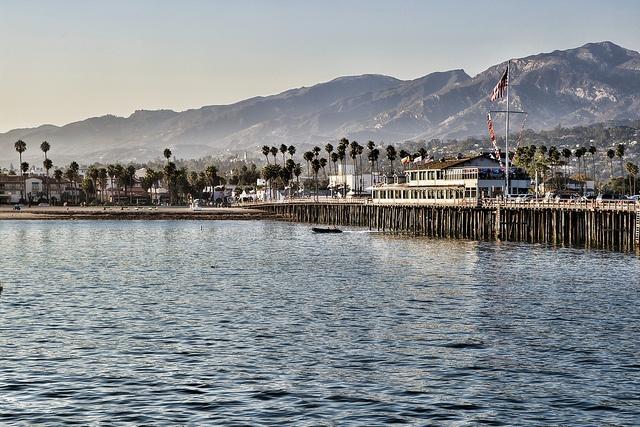
California is in desperate need of water. The state is in its fourth year of drought. Earlier this month, Gov. Jerry Brown issued mandatory water reductions, directing the State Water Resources Control Board to reduce city and municipal water use by 25 percent. It’s the first time in California history that a governor has issued mandatory water reductions.
One California city is turning to a source of water located up and down the state’s coast: seawater. The city of Santa Barbara is re-activating a seawater desalination plant that hasn’t been used in over 20 years. (The plant opened in 1992 but closed three months later.) Desalination plants are generally last-resort measures because they are energy intensive and costly. The desalination plant in Santa Barbara may cost five times the amount the city pays for reservoir water.
The plant is for “emergency water supply,” according to the city’s website, and was constructed as a response to the severe drought from 1986 to 1991. However, the city shut it down “due to sufficient freshwater supplies since 1991” and put it in long-term standby only to be re-activated when water supply demand can’t be met by any other means. On Feb. 11, 2014, the city of Santa Barbara declared a drought after three years of below average rainfall. Two reservoirs, Cachuma and Gibralter, supply most of the city’s water, but they are at low levels. The city also gets some water from the State Water Project.
In May 2014, the city council authorized a $746,025 contract for preliminary design services to re-activate the desalination plant and could award the construction contract "as early as April 2015.” The final decision will be delayed “as long as reasonably possible,” because re-activation will cost up to $40 million, and the city estimates it will take 12 to 15 months to re-activate the plant. Annual operating costs will cost an estimated $5 million at full production and $2.5 million in standby ready-state mode. The city plans to pay for the plant by taking out a loan.
Other desalination plants are also in the works in California. The central coast town of Cambria opened a brackish water desalination plant last year. The plant is expected to cost between $5 million and $8 million and will supply 35 percent of the city’s water use. Cambria desperately needed the desalination plant because it faced a severe water shortage. In January 2014, the city faced running out of water in three to six months and issued mandatory water restrictions. A potential brackish water desalination plant in Marina, a town in Monterey County, is in the permit stages and construction is slated to start in late 2016. Monterey County faces a water shortage due to over-drafting of the Carmel River.
In San Diego County, Carlsbad is building a seawater desalination plant. When completed, it will be the largest in the U.S. but will only supply about 7 percent of the county’s water use. Clearly, during a historic drought every drop counts.
Image credit: Michael Theis

Gina-Marie is a freelance writer and journalist armed with a degree in journalism, and a passion for social justice, including the environment and sustainability. She writes for various websites, and has made the 75+ Environmentalists to Follow list by Mashable.com.














